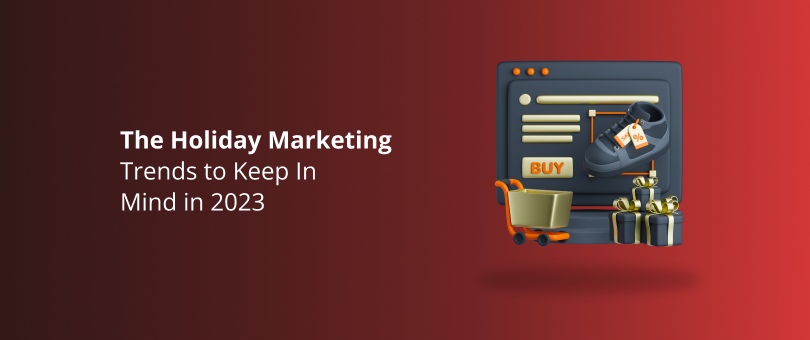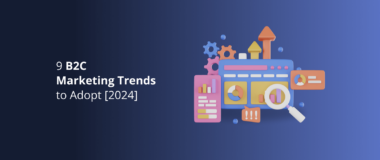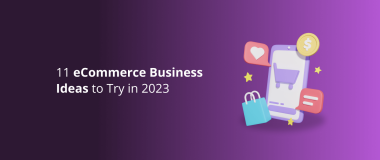The holidays will be here before we know it, and for brands, that means it’s time to start planning seasonal campaigns aimed at driving up sales.
While inflation and other economic factors have many feeling cautious, opportunities still abound for savvy marketers willing to align strategies with emerging consumer trends.
Let’s explore six consumer marketing trends poised to heavily influence holiday shopping behaviors and outcomes this year. Understanding these trends – and taking action on them – can help set your brand up for holiday success.
Discount-Seeking Shoppers Demand Early, Irresistible Offers
A recent survey revealed that the majority of consumers – 88% of those polled – say inflation will affect their holiday spending to some degree. When asked how they plan to combat rising prices, 67% responded that searching for substantial bargains and deals will be their primary approach. Comparatively, only about half said they intend to cut back on the overall number of items purchased
To capitalize on the trend of seeking irresistible offers, consider these tips:
- Unveil holiday deals early. Start as early as October to attract bargain hunters ASAP.
- Market discounts aggressively. Advertise your offers across all of your channels to ensure maximum visibility.
- Offer exclusively tiered deals and loyalty perks. To nudge bigger purchases out of top customers, offer exclusivity.
- Push gift bundles and holiday kits. This tactic boosts the perception of additional value received.
- Promote dollar-off discounts rather than percentage discounts. This emphasizes tangible savings.
- Layer on extra discounts for debit/credit card purchases versus cash payments. Offering an additional percentage or dollar amount off for customers paying with a debit/credit card can help with cashless transactions, which are faster and easier to track.
- Incorporate gamification. People love games. Offer progress bars,spin-to-win discounts, scratch and win deals, etc.
Readers Also Enjoy: WordPress For Ecommerce: 12 Things You Need to Know – DevriX
Flexible Financing Options Ease Purchase Pain Points
The popularity of “Buy Now, Pay Later” (BNPL) financing has exploded in recent years. According to government data, the total dollar value of BNPL loans expanded over 10 times between 2019 and 2021 – surging from $17 million to over $180 million.
The growth of BNPL mirrors its rising adoption among shoppers. Many consumers now consider installment payment options a baseline expectation when making purchases.
Retailers that fail to offer flexible BNPL at checkout risk losing a significant portion of sales to competitors who do provide that payment flexibility.
To capitalize on the flexible financing marketing trend:
-
- Add BNPL services. Add Affirm, Klarna or PayPal Credit specifically for the holiday season.
- Make payment plan options highly visible. Make payment plan options highly visible, in your marketing materials and at checkout, to encourage shoppers to take advantage of BNPL financing.
- Emphasize the lack of hidden fees or interest. Make sure you clarify the lack of hidden fees or interests to reduce consumer hesitancy towards BNPL.
- Allow installment payments consistently across ecommerce, mobile, and brick-and-mortar.
Omnichannel Marketing Blurs the Lines Between Shopping Online and In-Store
Today’s customers see physical and digital shopping as intertwined experiences.
A research reveals retailers offering BOPIS (Buy Online, Pick Up in Store) grew online revenue seven times faster in 2022 versus non-BOPIS merchants. Curbside pickup has also skyrocketed in adoption and demand. For brands with physical and online stores, eliminating friction between the two is now a must.
Some omnichannel marketing tactics include:
- Consider implementing BOPIS or curbside pickup to meet consumer demand for flexible fulfillment.
- Use store-specific deals and coupons to incentivize in-person visits from online shoppers.
- Allow hassle-free order returns between online and brick-and-mortar to remove barriers. This eliminates friction that could prevent omnichannel purchases.
- Unify loyalty programs, purchasing histories, and shopping carts across channels. Linking together loyalty accounts, transaction data, and carts creates a seamless experience across online and offline channels. Customers can earn and redeem perks however they choose to shop with you.
Hyper-Personalization Makes Customers Feel Valued
Today’s consumers have come to expect tailored, one-to-one brand experiences. Did you know 62% of shoppers want companies to anticipate their needs proactively?
Ways to boost personalization this holiday season:
- Segment marketing lists based on granular factors like purchase history and demographics. For instance if you’re an online clothing retailer, you could create segments for male and female shoppers, then further subdivide them based on their purchase history (e.g., frequent buyers, occasional shoppers). This way, you can tailor your holiday promotions differently for each segment.
- Serve up automated recommendations for gifts personalized to each subscriber. Use customer data to suggest products or gifts that match each subscriber’s preferences, browsing history, and/or purchase patterns. For example, if a customer frequently purchases hiking gear, recommend related items like camping equipment or outdoor clothing.
- Develop exclusive loyalty tier perks to make VIP members feel special. Recognize and reward your most loyal customers by offering them special perks and privileges. You can create a holiday VIP membership program where frequent customers receive benefits, early access to new holiday promotions or products, etc.
- Prioritize personalized outreach over generic mass emails whenever possible. Instead of sending out generic email blasts to your entire list, focus on crafting personalized messages that resonate with each recipient’s interests and needs.
Readers Also Enjoy: 6 Ways to Benefit from Personalized Marketing – DevriX
Meet Shopper Demands for Convenience With Shipping and Return Policies
Shipping and the ease of returns are make-or-break for many of today’s shoppers. This holiday season, brands that managed to nail delivery and refund policies in their marketing schemes will convert more sales.
Here are a few key tips to help you with this trend:
- Promote free, fast shipping. Highlight any free and/or expedited shipping options prominently across marketing touchpoints. For instance you could create a banner at the top of the homepages that says, “Free 2-Day Shipping on All Holiday Orders!” This perk will definitely attract price-conscious shoppers.
- Be transparent about timelines and costs. If shipping isn’t free, clearly communicate this along with the expected fees and timelines to set expectations.
Moreover, when a customer adds items to their cart, display a shipping cost estimator based on their location and chosen shipping method. Provide a clear shipping information page on your website with a table listing shipping options, costs, and estimated delivery times. For instance, “Standard Shipping (3-5 business days) – $4.99” and “Express Shipping (1-2 business days) – $9.99.” - Emphasize your return policy. It is important to make sure that customers know about your return policy. Let them know whether you also offer free return shipping. In your email newsletter, include a section titled “Hassle-Free Returns” where you outline your return policy. Use phrases like “No questions asked” and “Free return shipping” to assure customers. In your ads, include a call to action like “Shop with Confidence – Easy Returns Guaranteed!”
- Remove return friction. Make returns or exchanges effortless online as well as in store. Lower barriers to encourage risk-free buying. For instance you could offer a “Print Free Return Label” button on the customer’s order history page, making it easy for them to initiate a return online. For in-store purchases, provide a QR code that customers can scan at the store for a quick and seamless return process. You could also include return instructions with the shipped order, making it clear and straightforward.
Go Full Social Media
Searching for the perfect gifts on social media platforms such as Instagram, Pinterest, and Facebook is not something new. However, this year, advertising on social media is expected to generate ten times more online holiday shopping visits than traditional marketing.
Here are a few areas to prioritize:
Video Content
Video content has been dominating social media lately, and for a good reason – it’s very engaging. According to a HubSpot report, viewers watch almost the entirety of short videos, with 30% having an average view duration of over 81%. This shows just how captivated audiences are by video content on social platforms.
The important thing is to focus on fun, helpful videos that excite customers about the upcoming holiday season. .
Here are some tips on how to do exactly that.
- Create short videos highlighting your holiday products, special deals, or gift guides. Keep them under 60 seconds for maximum engagement.
- Film DIY holiday videos like gift wrapping tutorials or holiday craft ideas. These can inspire creativity and position your brand as a helpful resource.
- Share behind-the-scenes videos of your holiday preparations – decorating the store, product shoots, etc. This gives customers a peek behind the curtain.
- Encourage user-generated content by running a holiday video contest. This could motivate your customers to engage with your brand in a fun way.
- Live stream special holiday events or sales. This allows real-time interactions with your audience.
- Run holiday-themed video ads on social media. Tailor them to be eye-catching and seasonally appropriate.
Readers Also Enjoy: Hottest Influencer Marketing Trends for eCommerce [2023] – DevriX
Leverage USG
While some studies indicate influencer marketing may be losing effectiveness, the impact of User Generated Content (UGC) cannot be ignored. According to a report from last year, nearly half of TikTok users have made a purchase after seeing a product on the popular short-form video app.
UGC allows you to leverage satisfied customers to promote your brand. Encourage and feature user content to maximize its marketing potential.
Tips for leveraging UGC:
- Make it easy for customers to submit reviews, photos, and videos featuring your products. Provide incentives if needed.
- Share user content on your social platforms when given permission. This shows off your products in a real-world context.
- Use UGC in advertising campaigns. This type of content feels more authentic than brand-created material.
- Highlight positive customer experiences shared via UGC. This social proof can influence purchasing decisions.
- Curate and re-share the best UGC stories around your brand. The goal here is to inspire more high-quality submissions.
- Analyze UGC insights to see how customers really use and perceive your products. This can be used to take a look at everything from branding to product development.
Wrap Up
This holiday season, savvy brands have ample opportunities to connect with shoppers by aligning their strategies with key marketing trends. From early deals and flexible financing to digital-first engagement. Thoughtful planning and a customer-centric execution will not only help your business but it will ensure that your customers have an enjoyable and stress-free holiday shopping season.

![Hottest Influencer Marketing Trends for Ecommerce [2023]](https://devrix.com/wp-content/uploads/2023/08/Hottest-Influencer-Marketing-Trends-for-Ecommerce-2023-380x160.png)


